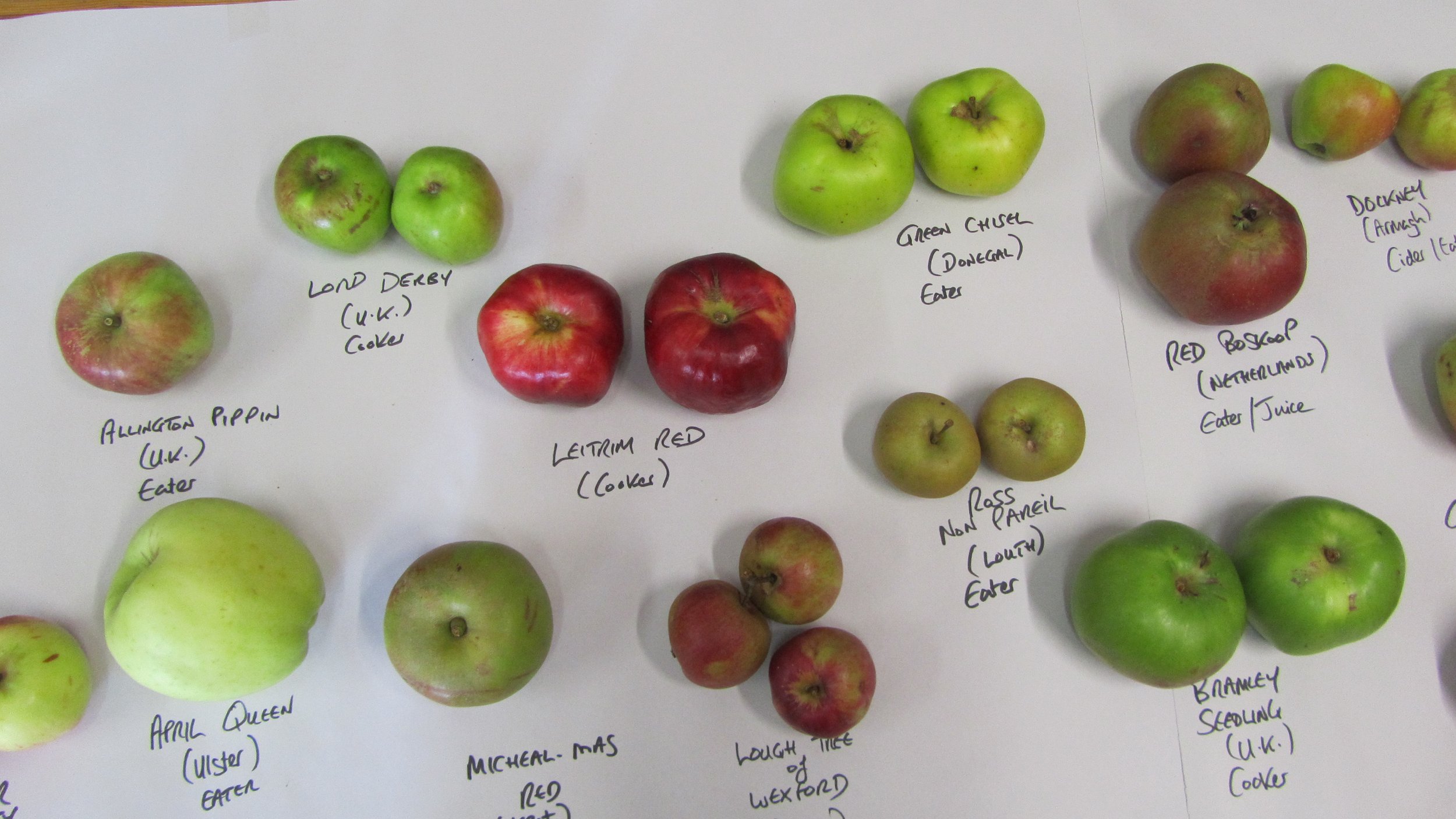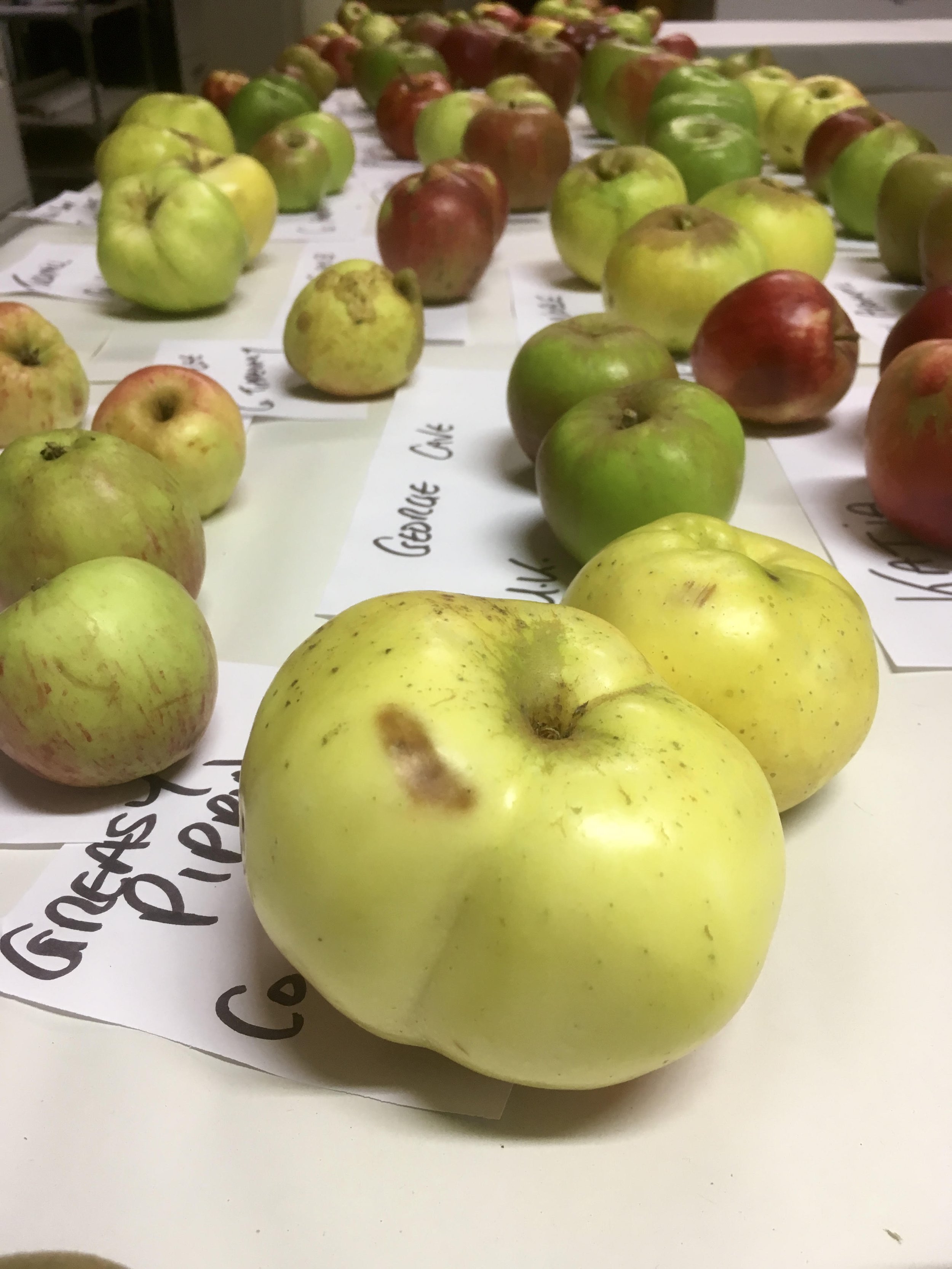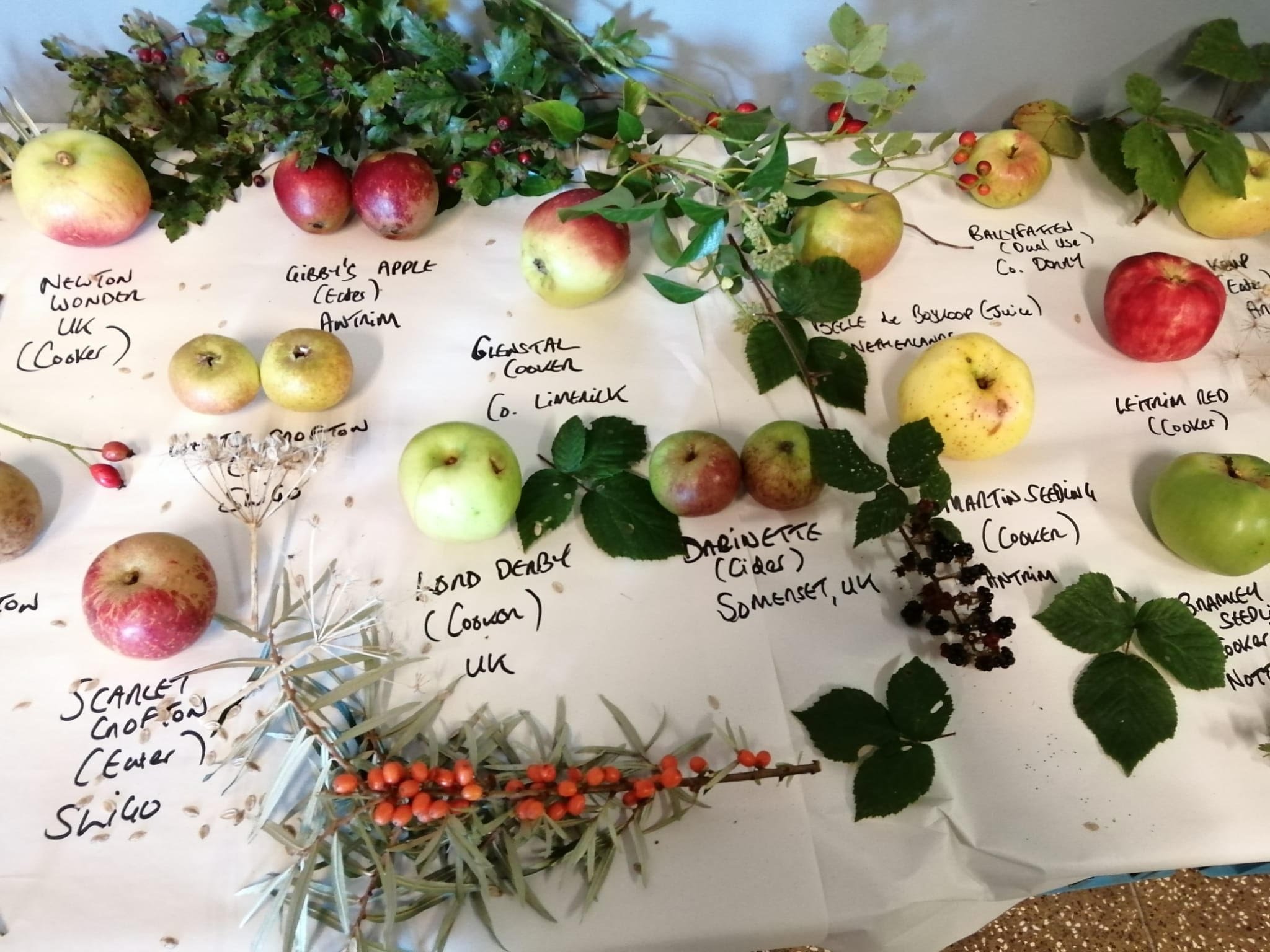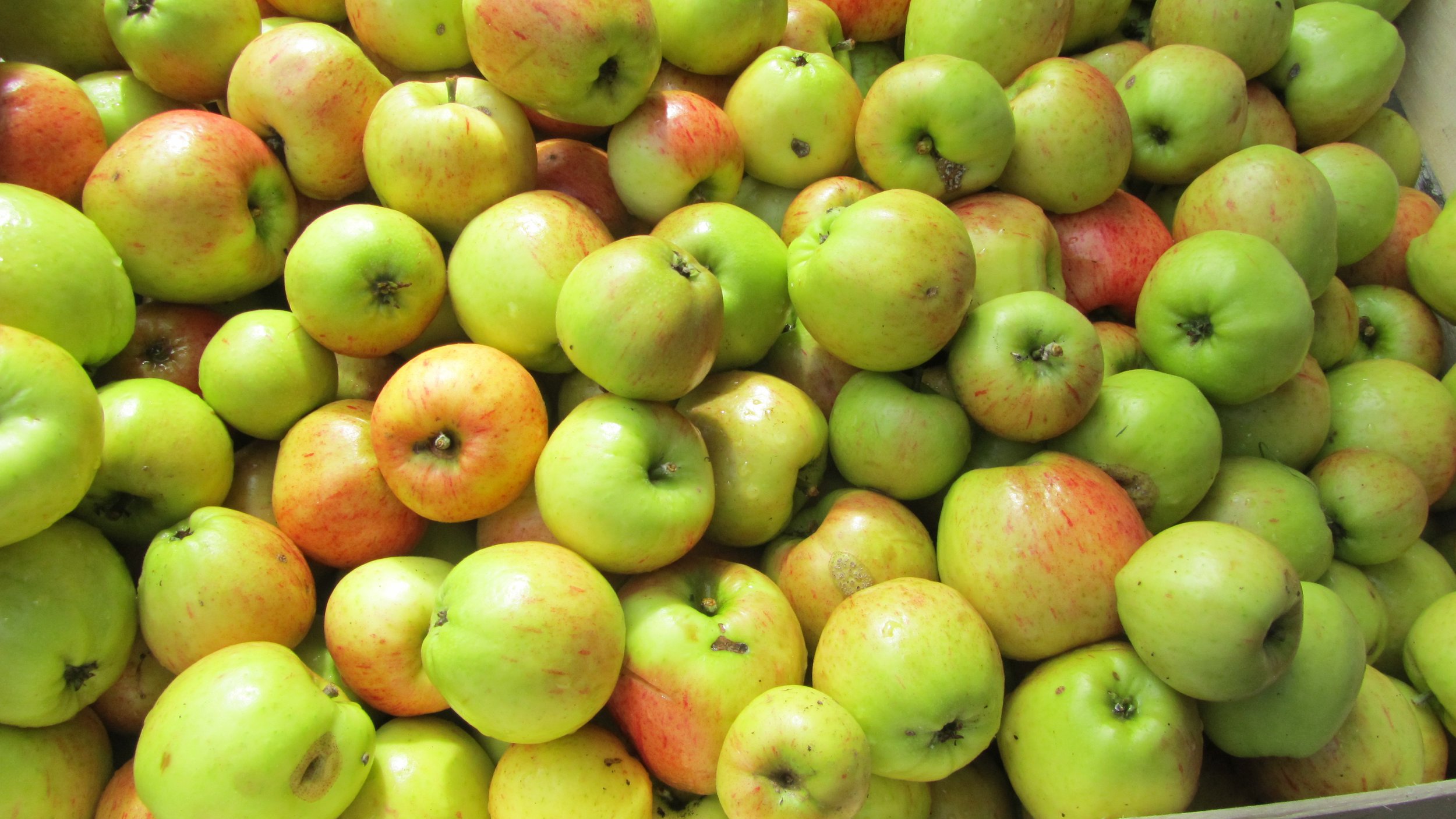The Apples of my Eye
….or there is more to apples than meets the ey
What is the first word that comes to your mind if I say ‘apples’? Well mine is Cox as in Cox Orange. For me the quint essential dessert apple, that had a very special place in my parents mini-orchard and could be harvested from mid-September on and lasted well into the new year. What a disappointment then to find out 20 years later that the climate in the Northwest of Ireland is not right for Cox. This is when I fell in love with the Irish Peach, an apple variety that ripens from late July on, has great flavour, but sadly doesn’t keep. Same for Katie, which goes soft within days or Discovery, another of my favourite apples, which has to be eaten within four to six weeks.
Apples have a season too
As I learned that not all apple varieties grow everywhere and some keep for month and others don’t, I also learned that apples have a season, in Ireland or the UK generally from mid-August to April. This is often forgotten, because in our modern day supermarket, an apple is something that never disappears no matter what time of year it is. You typically will find well known varieties like Granny Smith, Red and Golden Delicious, Gala and Braeburn in the stores all year round.
So here is my next question: Can you remember the country of origin when you bought your apples last Summer (May to July)? My research in local shops, supermarkets and also farmers markets (!) says: Argentina, Chile, New Zealand and South Africa. That is the reason I tend not buy apples at all from June to August.
In Ireland apples are available fresh from August to November and then from cold storage till the following Spring. Some varieties only appear for a short time like Lord Lambourne or the already mentioned Discovery, others like Jonagolds and Elstars appear in the Winter months as they get better when ripened and keep well for a few month. Bramleys, one of Irelands favourite cooking apples and the best for making apple pie, stores very well and are in season from August to April.
We need to grow more apples in Ireland
The big problem still is that we don’t grow enough apples in Ireland and the vast majority of apples consumed in Ireland annually are imported. That’s why it is all the more important to support Irish apple farms: Con Traas in Tipperary, Highbank Organic Orchard in Kilkenny or David Llewellyn in North Dublin.
Better even for the future is to grow our own apples. Two centuries ago Ireland’s orchard acreage was many times greater than what it is today. I vividly remember travelling the country side in the North West of Ireland at Easter 1985 viewing small farms that many cottages and farmhouses were flanked by apple trees, a cooking apple and an eating or dessert apple. Travelling the countryside more than 30 years later most modern or newly built houses have huge lawns, but there is rarely an apple tree in sight, when in fact it would be so easy to plant a few apple trees and make these areas productive before the lawn tax is introduced next year. Ok, I made this last one up!
How to plant an apple tree or create an orchard
On a more serious note we can all make a difference and join a community orchard in our neighbourhood or plant trees ourselves. This way we can eat fresh Irish apples in season or preserve them in many ways to enjoy them outside their season.
Growing fruit is in many ways easier than growing vegetables, although it requires a bit more preparation and planning and forward thinking. As you are preparing the ground for trees to grow for decades consider three main areas.
SHELTER - to protect from storms and cold winds for growth and to ensure good pollination. A hedge, ideally planted ahead, can be a productive feature itself if you include species such as elders, hazel and hawthorn
DRAINAGE - no fruit trees like their roots sitting in water. In heavy soils land drains need to be installed or trees planted on sloping mounds and staked well.
SOIL - ideally, fruit trees like a brown loam with an underlying permeable sub soil. The soil structure can be improved with compost, manures and fertilisers before planting takes place.
CHOOSE THE RIGHT ROOTSTOCK
Picking the right rootstock for your needs is important. Rootstocks control the size of the tree, its suitability for soil types, its yield and its disease resistance. Apple trees are grafted onto rootstocks with an M or MM prefix. Varieties grafted onto M27 or M9 dwarf rootstock will typically have a height and spread of 2 to 3m. Those on M26 or MM106 will grow between 3.5 and 6m and those on MM111, 5.5m and more. Trees on M27 or M9 require permanent staking and M9 has become the rootstock of choice for commercial production. Good suppliers of Irish indigenous apple varieties are the Irish Seed Savers in Clare and The Organic Centre in Leitrim.
Last not least make your apples last
Apart from storing apples in a cool, dark place, which in the absence of cellars is not so simple, there are many ways to enjoy apples in a different form: Apple juice, wine, apple cider and cider vinegar, dried apple rings, apple butter and jam.
Most of the wind falls from our apple trees will end up as apple juice. Last autumn we did produce a natural hard cider without any additional ingredients by simply letting fresh, organic, unpasteurised, unfiltered apple juice ferment from sweet to sour from non-alcoholic to alcoholic. We resisted all advice to use a yeast and it turned out really good. We also made an apple wine, which in the worst case scenario will be used in cooking.
Neantog Apple Butter
One of our favourite recipes to preserve apples is making Apple Butter, completely without sugar. If the apples are sweet you can leave out the honey.
Ingredients:
1 kg apples
150g honey
1 lemon freshly squeezed (optional)
½ to 1tsp of vanilla extract and a pinch of cinnamon.
Method:
Peel the apples (the peels can be dehydrated and made into natural pectin!), cut into chunks and simmer on very low temperature with a little water until they are soft. Liquidise with a stick blender or in a blender. Add honey and lemon juice if you like and the spices.
Heat the mix up to 72 Celsius and fill hot into jars and close with twist - off lids. Turn them upside down for a couple of minutes. Turn them back and let them cool down. Store in a cool place.
Even if I knew that tomorrow the world would go to pieces, I would still plant my apple tree. (Martin Luther)






